Yangon, Myanmar, 2003
Photograph by Maria Stenzel
Worshippers’ candles illuminate the Shwedagon Paya, a gilded Buddhist pagoda that rises almost 330 feet (100 meters) in central Yangon (Rangoon), Myanmar (Burma).
The temple, with its glittering spires and stupas, was immortalized by Rudyard Kipling in his Letters from the East.
(Photo shot on assignment for, but not published in, "Blood, Sweat, and Toil Along the Burma Road, " November 2003, National Geographic magazine)
信徒们点燃的蜡烛照亮了瑞光大金塔,这是一座高达330英尺(100米)的镀金佛塔,位于缅甸仰光的中心。转载翻译部分请注明天涯东方猪。这座有着金光闪闪的尖顶和佛塔的寺院,因出现在鲁德亚德·吉卜林(Rudyard Kipling)所著的《东方书信》中而名垂千古。
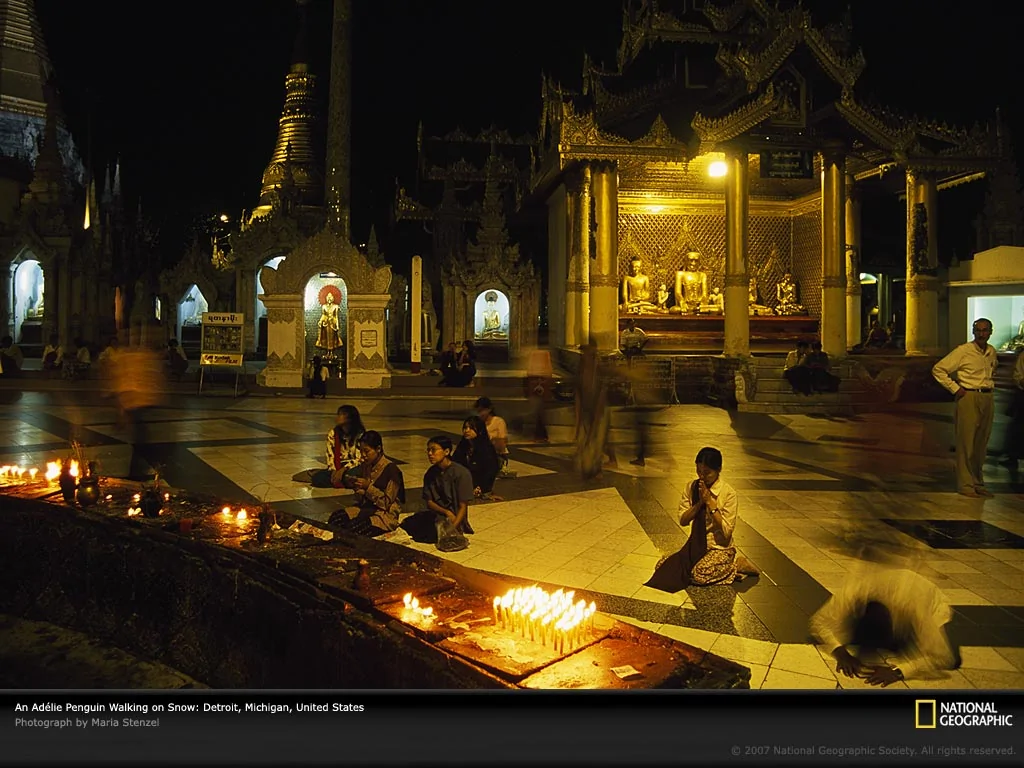 |
2007-08-12
Hawaii, 2005
Photograph by Susan Seubert
Suntanned patrons at the patio bar of Halekulani Hotel’s House Without a Key restaurant enjoy stunning sunset views and a hula show on Oahu Island’s Waikiki Beach.
The swaying hips and undulating arm movements of a hula dancer imitate the waves that wash over Hawaii’s shores. Hula went underground for about 60 years in the early 19th century after Christian missionaries persuaded rulers to ban the provocative dance. It is enjoying a resurgence today.
(Photo shot on assignment for, but not published in, "Aloha Again, " January/February 2005, National Geographic Traveler magazine)
在瓦胡岛的怀基基海滩上哈蕾柯兰妮酒店中,晒得黝黑的游客们正在无钥之屋餐馆(House Without a Key)的露天吧里欣赏美妙的夕阳景色和草裙舞表演。转载翻译部分请注明天涯东方猪。草裙舞者摇摆着臀部,手臂如波浪起伏般运动,这些动作是在模仿冲刷着夏威夷岸边的海浪。19世纪初期,当时基督传教士说服统治者禁止了这种挑逗性的舞蹈,此后将近60年的时间里,草裙舞不得不在地下进行。如今,其已卷土重来。
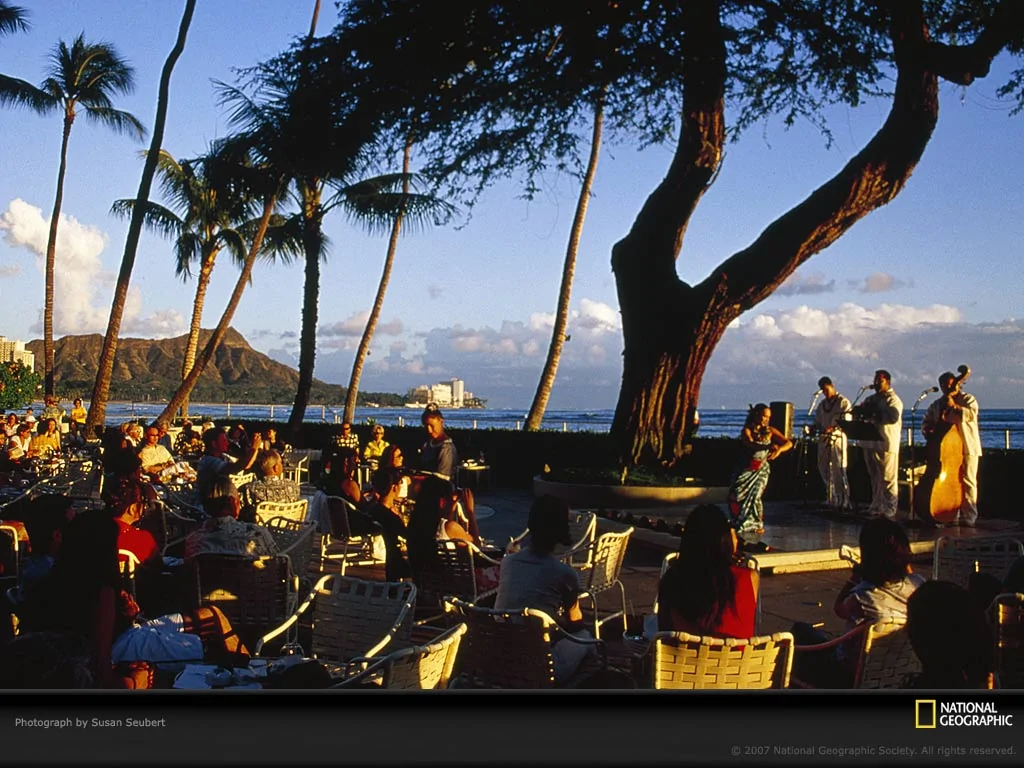 |
2007-08-13
Peru, 1981
Photograph by Steve Raymer
Three vicuñas graze in tall grass in Peru’s Pampa Galeras Reserve.
Prized for their soft, fine wool, vicuñas had been hunted to near-extinction by the late 1960s. Government protections in Peru, Bolivia, Argentina, and Chile, and international trade restrictions on vicuña wool have helped the species rebound. Despite a continued threat from poachers, they are now considered at low risk for extinction.
(Photo shot on assignment for, but not published in, "Wild Cargo: the Business of Smuggling Animals," March 1981, National Geographic magazine)
三只小羊驼(vicuñas)正在秘鲁的潘帕伽勒拉斯保护区的草丛里觅食。小羊驼的皮毛柔软顺滑,非常珍贵。到上世纪六十年代末期,几乎被捕猎殆尽。转载翻译部分请注明天涯东方猪。秘鲁,玻利维亚,阿根廷和智利等国政府对其采取了保护行动,国际贸易上对小羊驼毛交易也进行了限制,以助于该物种的回升。尽管小羊驼持续受到偷猎者的威胁,但目前认为其灭绝的风险已经较低。
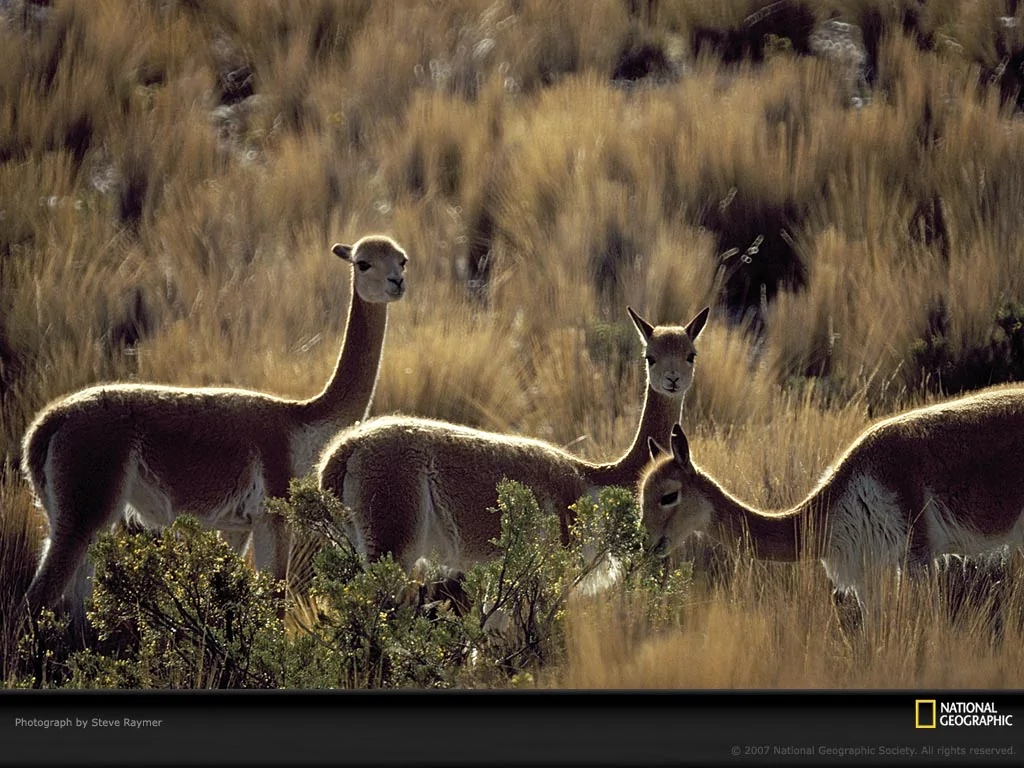 |
2007-08-14
Mexico, 1999
Photograph by Jonathan Tourtellot
A large stone cross welcomes visitors to the San Ignacio Mission church near Creel, Mexico.
The church, built by Jesuits in the 1700s, is often used by the region’s Tarahumara Indians as a gathering place and a market to sell their handicrafts to tourists.
(Photo shot on assignment for, but not published in, "The Two Faces of Tourism," July/August 1999, National Geographic Traveler magazine)
在墨西哥克雷厄尔附近的圣伊格纳西奥教会门前,一座巨大的石制十字架迎接着来访者。这座教堂在十八世纪由耶稣会士所建,现成为当地的塔拉乌马拉印第安人聚集的场所和向游客兜售手工艺品的市场。
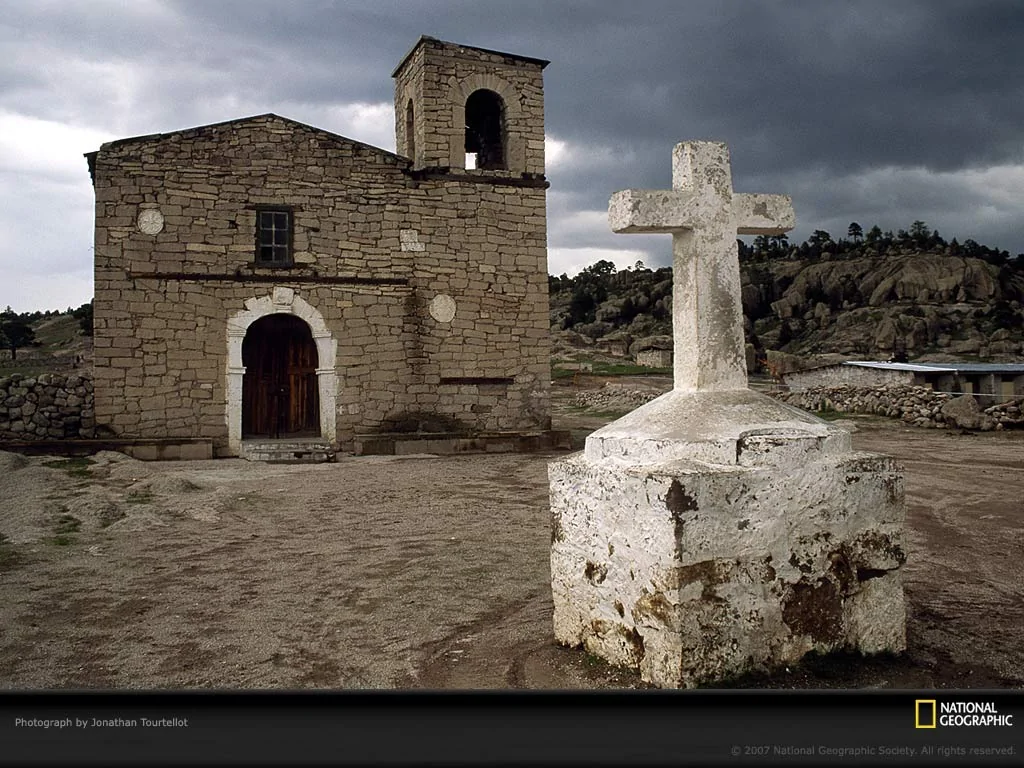 |
2007-08-15
Vestmannaeyjar, Iceland, 1999
Photograph by Sisse Brimberg
Campers await the start of a raucous national day festival in the town of Vestmannaeyjar on Iceland’s Heimaey Island.
Held every year on the first weekend in August, this three-day outdoor festival began in 1874, when bad weather kept residents from traveling to the mainland to celebrate Iceland’s new status as a republic. They held a celebration of their own, and the rest is history.
(Photo shot on assignment for, but not published in, "In Search of Vikings," May 2000, National Geographic magazine)
在冰岛的赫马岛上的韦斯文尼查(Vestmannaeyjar)镇,露营者们正在等待一个纷乱的国庆节庆祝活动开始。转载翻译部分请注明天涯东方猪。这个为期三天的户外节日在每年八月的第一个周末举行,起始于1874年,当时的恶劣天气使得当地居民无法奔赴大陆庆祝冰岛成为共和国。于是他们就自己举办了庆祝活动,并一直延续至今。
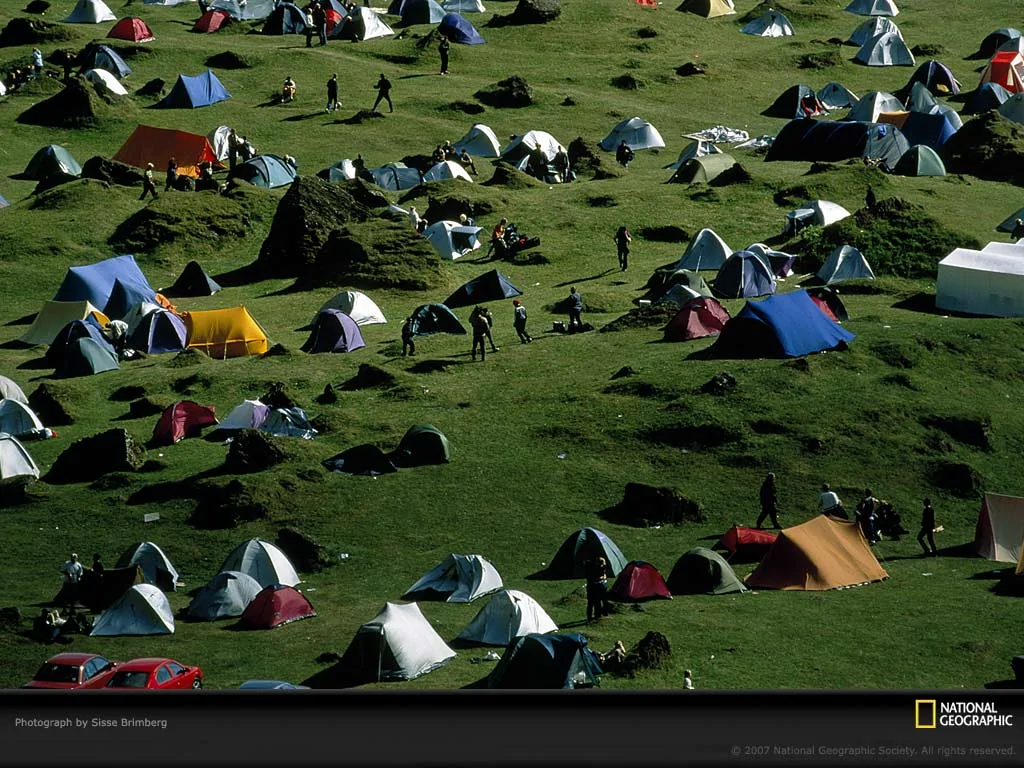 |
2007-08-16
Yemen, 2005
Photograph by George Steinmetz
Clad in black abayas and sun-shielding straw hats called nakhls, women work the fields in central Yemen’s Wadi Hadramawt, an oasis on the southern periphery of Arabia’s Rub al Khali, or Empty Quarter. Occupying a fifth of the Arabian Peninsula, the Rub al Khali is the world’s largest sand sea.
(Text adapted from and photo shot on assignment for, but not published in, "Empty Quarter: Exploring Arabia’s Legendary Sea of Sand, " February 2005, National Geographic magazine)
在也门的瓦地哈达拉马瓦杜(Wadi Hadramawt)中部,身穿黑色阿拉伯长袍头戴一种叫做nakhls的遮阳草帽的妇女们正在田间干活. 这里是阿拉伯半岛上的鲁布哈利(Rub al Khali)沙漠南部边上的一块绿洲,这片沙漠又称为空域(Empty Quarter).鲁布哈利是世界上最大的沙海,占据了阿拉伯半岛五分之一的面积.
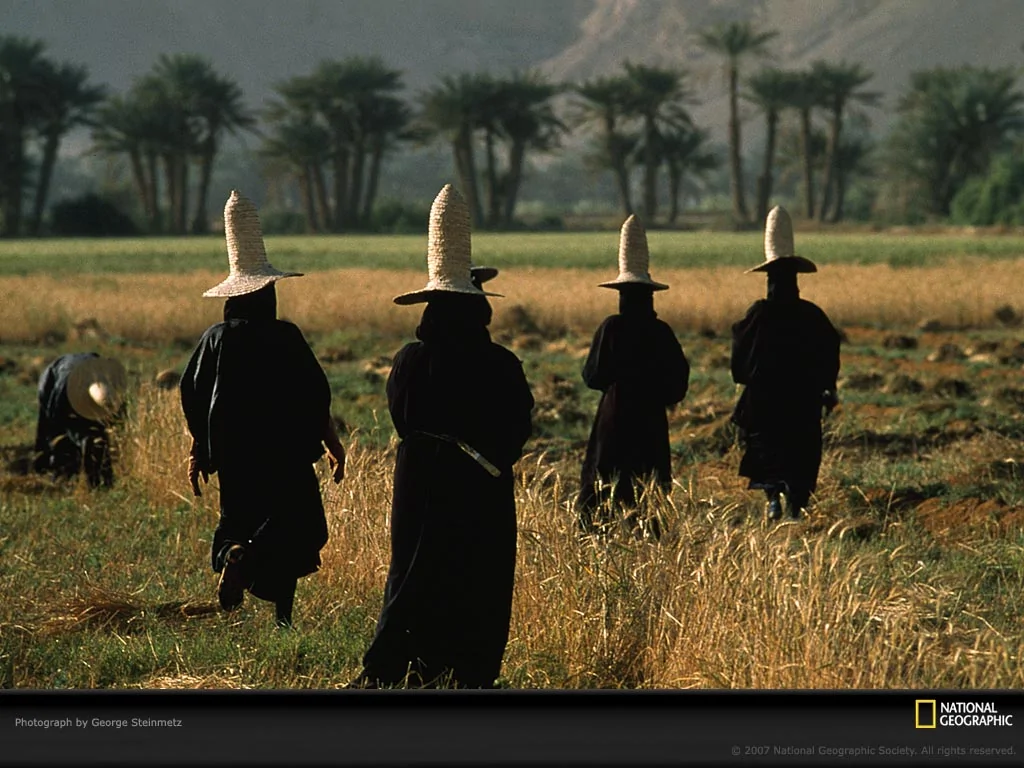 |
2007-08-17
India, 1996
Photograph by Cary Wolinsky
A washerwoman hangs diaphanous saris to dry on the mortared walls of a house in India. India’s enormous labor pool allows even middle-class households there to employ home help, including servants, cooks, and washerwomen.
(Photo shot on assignment for, but not published in, "The Quest for Color," July 1999, National Geographic magazine)
印度的一名洗衣妇正在一座粉刷过的房子前晾晒着精美的莎丽(一种主要由印度或巴基斯坦妇女穿着的外套)。印度有着巨大的劳动力资源,这使得连那里的中产阶级家庭都有雇佣如仆人,厨师和洗衣妇等家务工人的能力。
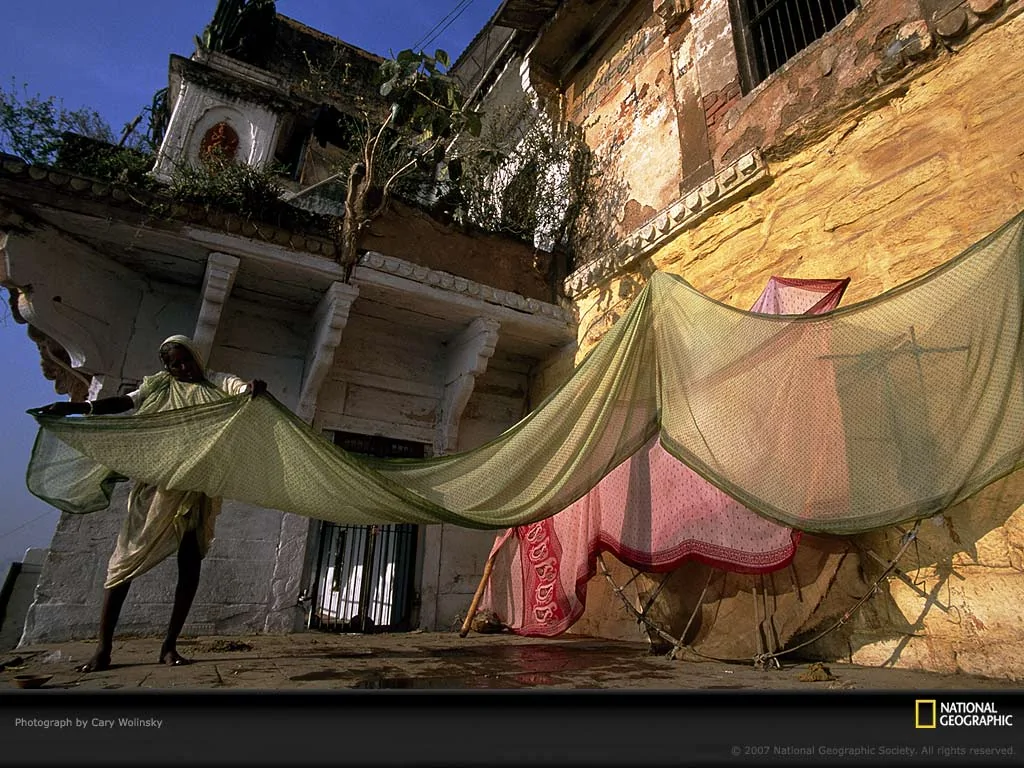 |
2007-08-18
Arizona, 2007
Photograph by Michael Nichols
A time-lapse photo reveals a smattering of stars dotting the sky above Grand Canyon National Park in Arizona.
The landscape that today attracts more than four million tourists was once home to many indigenous peoples, including the Hisatsinom, or Anasazi. They and others survived by growing cotton, corn, beans, and squash along the sandy banks and terraces of the Colorado River some 1,300 years ago.
(Text adapted from and photo shot on assignment for, but not published in, "The Unexpected Canyon," January 2006, National Geographic magazine)
这张间隔拍摄照片显示出一些点缀在亚利桑那州大峡谷国家公园上空的星星。这片每年吸引着超过四百万名游客的土地曾经是许多土著民族的故土,包括"Hisatsinom"即阿纳萨齐印第安人。转载翻译部分请注明天涯东方猪。在大约1,300年前,他们和其他民族在科罗拉多河两旁多沙的河岸和梯田上种植棉花,玉米,豆类和南瓜,以此谋生。
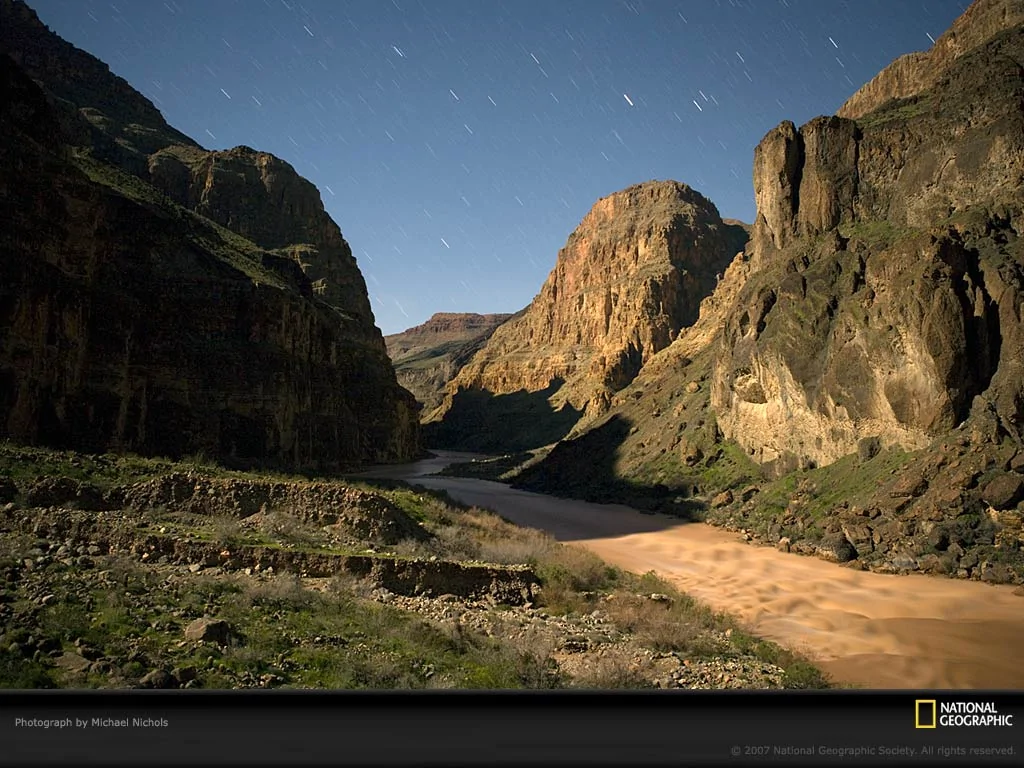 |
2007-08-19
Missouri, 1988
Photograph by James P. Blair
A tree gleams yellow in the sunlight in the Seiwa-en Japanese garden at the Missouri Botanical Garden. At 14 acres (5.6 hectares), it is the largest traditional Japanese garden in the United States. Its creator, Koichi Kawana, describes it as a place of "pure, clear harmony and peace."
(Photo shot on assignment for, but not published in, "The Plant Hunters: Portrait of the Missouri Botanical Garden," August 1990, National Geographic magazine)
在密苏里植物园中的清和园里,一棵树在阳光下放出微微的黄光。这座花园占地14英亩(5.6公顷),是美国最大的传统日本花园。转载翻译部分请注明天涯东方猪。其设计者川名幸一对这里的描述是“纯净,明朗谐调,平和”。
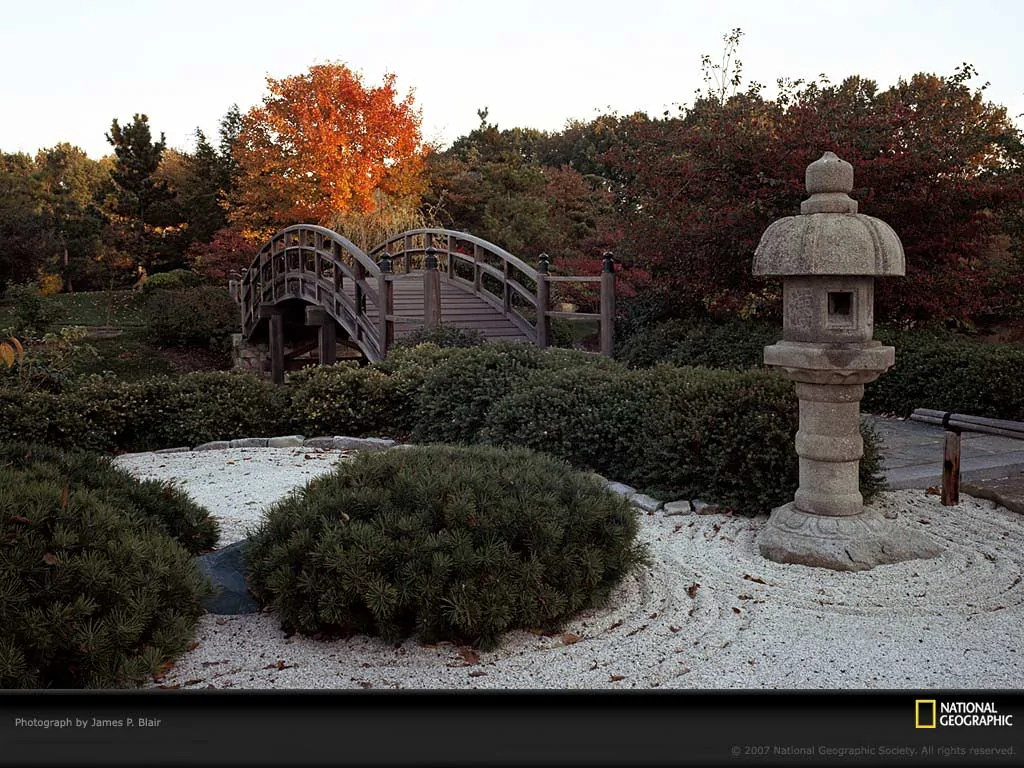 |
2007-08-20
New Hampshire, 1981
Photograph by Sandy Felsenthal
Steam and sulfides billow from the James River Corporation pulp and paper mill on the Androscoggin River in Berlin, New Hampshire. The plant opened in 1853 as a sawmill and quickly grew into one of the foremost chemical pulp mills in the world.
(Text adapted from and photo shot on assignment for, but not published in, "Contrary New Hampshire," December 1982, National Geographic magazine)
在新罕布什尔州的柏林,位于安德罗斯科根河旁的詹姆斯河公司的制浆造纸厂向外排放着滚滚的含有硫化物的蒸汽。转载翻译部分请注明天涯东方猪。这个工厂成立于1853年,最初为一个锯木厂,后来迅速成长为世界上最重要的化学制浆造纸厂之一。
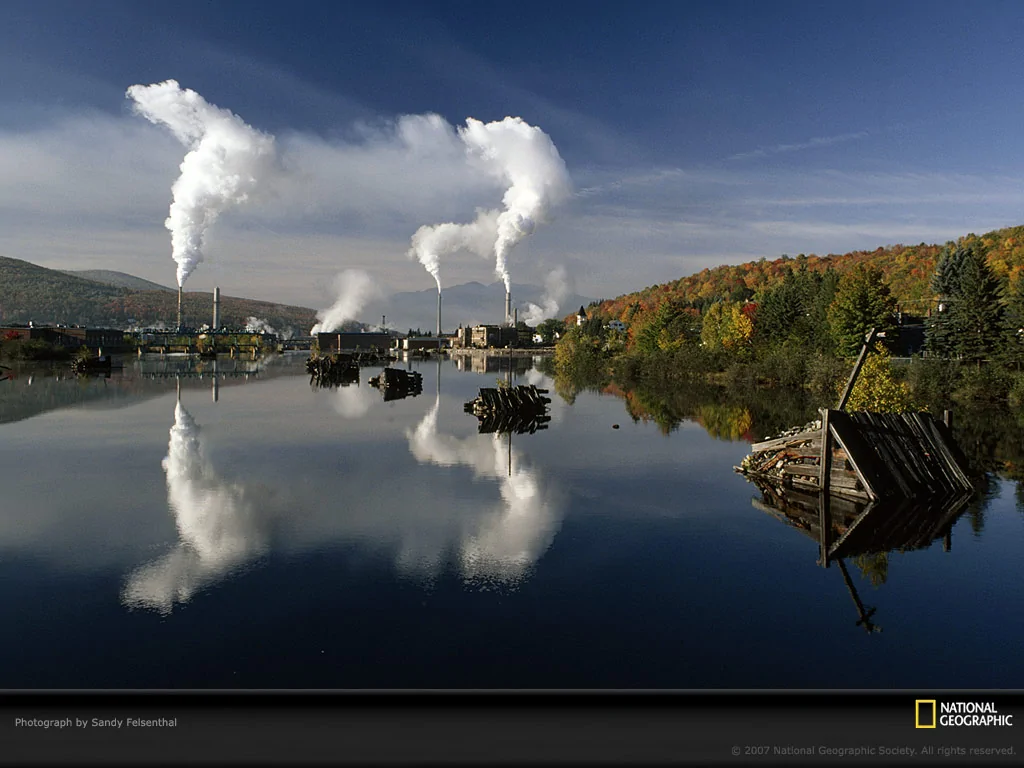 |



















